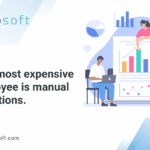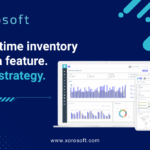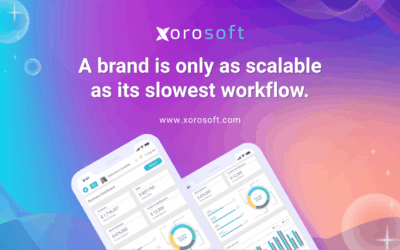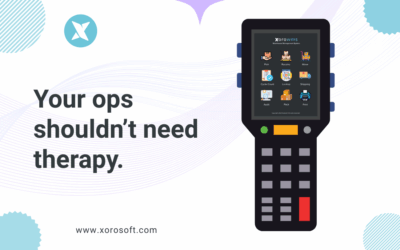
Introduction to demand planning in an ERP system
As a business owner or operations manager, I understand the critical importance of demand planning in an Enterprise Resource Planning (ERP) system. In today’s fast-paced and highly competitive business landscape, accurate and timely predictions of customer demand are essential for maintaining optimal inventory levels, streamlining production processes, and ensuring customer satisfaction. An ERP system plays a pivotal role in this process, providing a centralized platform for managing and analyzing data from various departments, including sales, marketing, and supply chain.
Effective demand planning within an ERP system enables businesses to anticipate future demand patterns, adjust production schedules, and allocate resources efficiently. By leveraging the power of data analytics and forecasting tools, companies can make informed decisions, minimize excess inventory, and reduce the risk of stockouts, ultimately leading to improved profitability and customer loyalty.
Importance of accurate and timely predictions in demand planning
Accurate and timely predictions in demand planning are crucial for maintaining a competitive edge in the market. Inaccurate or delayed forecasts can lead to a myriad of challenges, including:
- Excess Inventory: Overestimating demand can result in excess inventory, tying up valuable capital and increasing storage costs.
- Stockouts: Underestimating demand can cause stockouts, leading to missed sales opportunities and dissatisfied customers.
- Production Inefficiencies: Inaccurate demand forecasts can disrupt production schedules, causing inefficiencies, increased costs, and delays in meeting customer orders.
- Cash Flow Issues: Excess inventory or stockouts can negatively impact cash flow, hindering a company’s ability to invest in growth opportunities or meet financial obligations.
By prioritizing accurate and timely demand planning, businesses can optimize their operations, reduce costs, and enhance customer satisfaction, ultimately driving long-term success and profitability.
Understanding the XoroERP system and its benefits
XoroERP is a comprehensive and powerful ERP solution designed to streamline various business processes, including demand planning, inventory management, accounting, and supply chain operations. As a leading ERP system, XoroERP offers numerous benefits to businesses of all sizes and across various industries:
- Centralized Data Management: XoroERP provides a centralized database for storing and managing data from multiple departments, ensuring data consistency and accessibility.
- Real-time Visibility: With XoroERP, businesses can gain real-time visibility into key performance indicators, inventory levels, sales trends, and other critical data points, enabling informed decision-making.
- Integrated Modules: XoroERP comprises integrated modules for various business functions, such as demand planning, inventory management, accounting, and supply chain operations, allowing for seamless data flow and collaboration across departments.
- Scalability and Flexibility: XoroERP is designed to be scalable and flexible, enabling businesses to adapt to changing market conditions and growth requirements.
- Advanced Analytics and Reporting: XoroERP offers powerful analytics and reporting capabilities, providing valuable insights into demand patterns, sales trends, and operational efficiencies.
By leveraging the robust features and functionalities of XoroERP, businesses can streamline their operations, enhance productivity, and gain a competitive advantage in the market.
Key features and functionalities of XoroERP for demand planning
XoroERP offers a comprehensive suite of features and functionalities specifically designed to support effective demand planning. Here are some of the key features:
- Demand Forecasting: XoroERP utilizes advanced forecasting algorithms and machine learning techniques to analyze historical data, market trends, and customer behavior, enabling accurate demand predictions.
- Scenario Planning: The system allows users to create and evaluate multiple demand scenarios based on various factors, such as promotional activities, market conditions, and seasonality.
- Collaborative Forecasting: XoroERP facilitates collaboration between different departments, such as sales, marketing, and supply chain, enabling cross-functional input and consensus in demand planning.
- Sales and Operations Planning (S&OP): The system supports integrated sales and operations planning, aligning demand forecasts with production capacity, inventory levels, and supply chain constraints.
- Exception Management: XoroERP includes exception management capabilities, alerting users to potential issues or deviations from forecasted demand, enabling proactive mitigation strategies.
- Integration with Other Modules: XoroERP seamlessly integrates with other modules, such as inventory management, accounting, and supply chain management, ensuring data consistency and enabling end-to-end visibility.
By leveraging these powerful features, businesses can enhance their demand planning processes, improve forecast accuracy, and make data-driven decisions to optimize inventory levels, production schedules, and resource allocation.
Best practices for demand planning in XoroERP
To maximize the benefits of XoroERP’s demand planning capabilities, it is essential to follow best practices. Here are some recommended strategies:
- Establish Clear Processes: Define clear processes and responsibilities for demand planning within your organization, ensuring collaboration and accountability across departments.
- Leverage Historical Data: Utilize XoroERP’s data analysis capabilities to analyze historical sales data, identify patterns, and incorporate them into demand forecasting models.
- Incorporate External Factors: Consider external factors, such as market trends, competitor activities, and economic conditions, when developing demand forecasts.
- Continuously Monitor and Adjust: Regularly monitor actual demand against forecasted demand and make necessary adjustments to improve forecast accuracy over time.
- Utilize Exception Management: Leverage XoroERP’s exception management capabilities to identify and address deviations from forecasted demand promptly.
- Collaborate with Stakeholders: Encourage cross-functional collaboration and input from stakeholders, such as sales, marketing, and supply chain teams, to ensure comprehensive demand planning.
- Provide Training and Support: Invest in training and support for your team to ensure they are proficient in using XoroERP’s demand planning tools and features.
By following these best practices, businesses can optimize their demand planning processes, enhance forecast accuracy, and make informed decisions to drive operational efficiency and profitability.
Integrating inventory management system with XoroERP for improved demand planning
Effective demand planning is closely tied to inventory management, as accurate inventory levels are essential for meeting customer demand and maintaining operational efficiency. XoroERP’s integrated inventory management system seamlessly integrates with the demand planning module, providing a comprehensive solution for optimizing inventory levels and ensuring timely fulfillment of customer orders.
- Real-time Inventory Visibility: XoroERP’s inventory management system provides real-time visibility into inventory levels across multiple locations, enabling businesses to make informed decisions about production schedules, stock replenishment, and demand fulfillment.
- Automated Reorder Points: XoroERP allows for the configuration of automated reorder points, ensuring that inventory levels are maintained within predefined thresholds and minimizing the risk of stockouts.
- Inventory Optimization: By integrating demand forecasts with inventory levels, XoroERP can recommend optimal inventory levels, reducing excess inventory and associated carrying costs.
- Streamlined Replenishment: XoroERP’s inventory management system can generate purchase orders and work orders based on demand forecasts, streamlining the replenishment process and ensuring timely fulfillment of customer orders.
- Lot and Serial Number Tracking: For businesses dealing with serialized or lot-controlled inventory, XoroERP provides robust tracking capabilities, enabling better visibility and control over inventory movements.
By leveraging the integrated inventory management system within XoroERP, businesses can optimize inventory levels, reduce carrying costs, and enhance customer satisfaction through timely order fulfillment, ultimately improving overall operational efficiency and profitability.
The role of accounting in demand planning with XoroERP
Demand planning and accounting are intrinsically linked, as accurate financial forecasting and budgeting rely heavily on demand projections. XoroERP’s integrated accounting module plays a crucial role in supporting effective demand planning and ensuring financial visibility and control.
- Budgeting and Forecasting: XoroERP’s accounting module allows businesses to create budgets and financial forecasts based on demand projections, enabling better resource allocation and cash flow management.
- Cost Analysis: By integrating demand planning with accounting, businesses can analyze the cost implications of various demand scenarios, enabling informed decision-making and profitability optimization.
- Revenue Recognition: XoroERP supports revenue recognition based on actual sales and demand fulfillment, providing accurate financial reporting and compliance with accounting standards.
- Cash Flow Management: Accurate demand forecasts, coupled with the accounting module’s cash flow projections, enable businesses to manage their cash flow effectively and ensure sufficient liquidity to meet operational needs.
- Profitability Analysis: XoroERP’s accounting module provides profitability analysis capabilities, allowing businesses to evaluate the profitability of different product lines, customer segments, and sales channels based on demand patterns and associated costs.
By leveraging the integration between demand planning and accounting within XoroERP, businesses can gain a holistic view of their financial performance, make data-driven decisions, and optimize profitability while maintaining compliance with accounting standards and regulations.
Tips for optimizing demand planning in XoroERP
To fully leverage the power of XoroERP’s demand planning capabilities, consider the following tips for optimization:
- Data Quality: Ensure the accuracy and completeness of input data, including historical sales data, customer information, and market trends, as this will directly impact the quality of demand forecasts.
- Continuous Improvement: Regularly review and refine demand planning processes, incorporating feedback from stakeholders and analyzing forecast accuracy to identify areas for improvement.
- User Training: Invest in comprehensive user training to ensure that all stakeholders, including sales, marketing, and supply chain teams, are proficient in using XoroERP’s demand planning tools and features.
- Scenario Analysis: Utilize XoroERP’s scenario planning capabilities to evaluate the impact of various factors, such as promotions, new product launches, or market shifts, on demand forecasts.
- Collaboration and Communication: Foster cross-functional collaboration and open communication among teams involved in demand planning, ensuring alignment and consensus on demand forecasts.
- Integration with External Data Sources: Explore the integration of XoroERP with external data sources, such as market intelligence platforms or customer relationship management (CRM) systems, to enhance demand forecasting accuracy.
- Performance Monitoring: Regularly monitor key performance indicators (KPIs) related to demand planning, such as forecast accuracy, inventory turnover, and customer service levels, to identify areas for improvement and track progress.
By implementing these optimization tips, businesses can maximize the benefits of XoroERP’s demand planning capabilities, enhance forecast accuracy, and drive operational efficiency and profitability.
The future of demand planning with XoroERP
As technology continues to evolve, Xorosoft, the company behind XoroERP, is committed to staying at the forefront of innovation and delivering cutting-edge solutions for demand planning. The future of demand planning with XoroERP is exciting and promising, with several advancements on the horizon:
- Advanced Machine Learning and AI: Xorosoft is actively exploring the integration of advanced machine learning and artificial intelligence (AI) algorithms into XoroERP’s demand planning module. These technologies will enable more accurate and adaptive demand forecasting, taking into account a wide range of factors and patterns.
- Internet of Things (IoT) Integration: The integration of IoT devices and sensors with XoroERP will provide real-time data on inventory levels, production processes, and customer behavior, enabling more precise demand forecasting and proactive decision-making.
- Predictive Analytics: XoroERP will leverage predictive analytics capabilities to identify potential demand patterns and trends, allowing businesses to anticipate and prepare for future market shifts and customer preferences.
- Augmented Reality and Virtual Reality: Xorosoft is exploring the potential of augmented reality (AR) and virtual reality (VR) technologies to enhance demand planning processes, enabling interactive visualizations and simulations for scenario planning and decision-making.
- Cloud-based and Mobile Solutions: XoroERP will continue to evolve its cloud-based and mobile solutions, providing users with seamless access to demand planning tools and data from anywhere, at any time, enabling real-time collaboration and decision-making.
By embracing these future advancements, Xorosoft aims to empower businesses with the most advanced and innovative demand planning solutions, enabling them to stay ahead of the competition and drive sustainable growth and profitability.
To experience the power of XoroERP’s demand planning capabilities and explore how it can transform your business, we invite you to Book a Demo with Xorosoft. Our team of experts will provide a personalized demonstration and guide you through the best practices for implementing and optimizing demand planning in your organization.
Conclusion
In the dynamic and competitive business landscape, mastering demand planning is crucial for achieving operational excellence, optimizing inventory levels, and enhancing customer satisfaction. XoroERP, a comprehensive and powerful ERP solution, offers a robust set of features and functionalities to support accurate and timely demand predictions.
By following the best practices outlined in this article, integrating inventory management and accounting processes, and leveraging the optimization tips, businesses can unlock the full potential of XoroERP’s demand planning capabilities. With a deep commitment to innovation, Xorosoft is continuously exploring advancements in technology to deliver cutting-edge solutions that will shape the future of demand planning.
Embrace the power of XoroERP and embark on a journey towards streamlined operations, improved profitability, and sustained growth. Book a demo with Xorosoft today and experience the transformative impact of effective demand planning in your ERP system.









